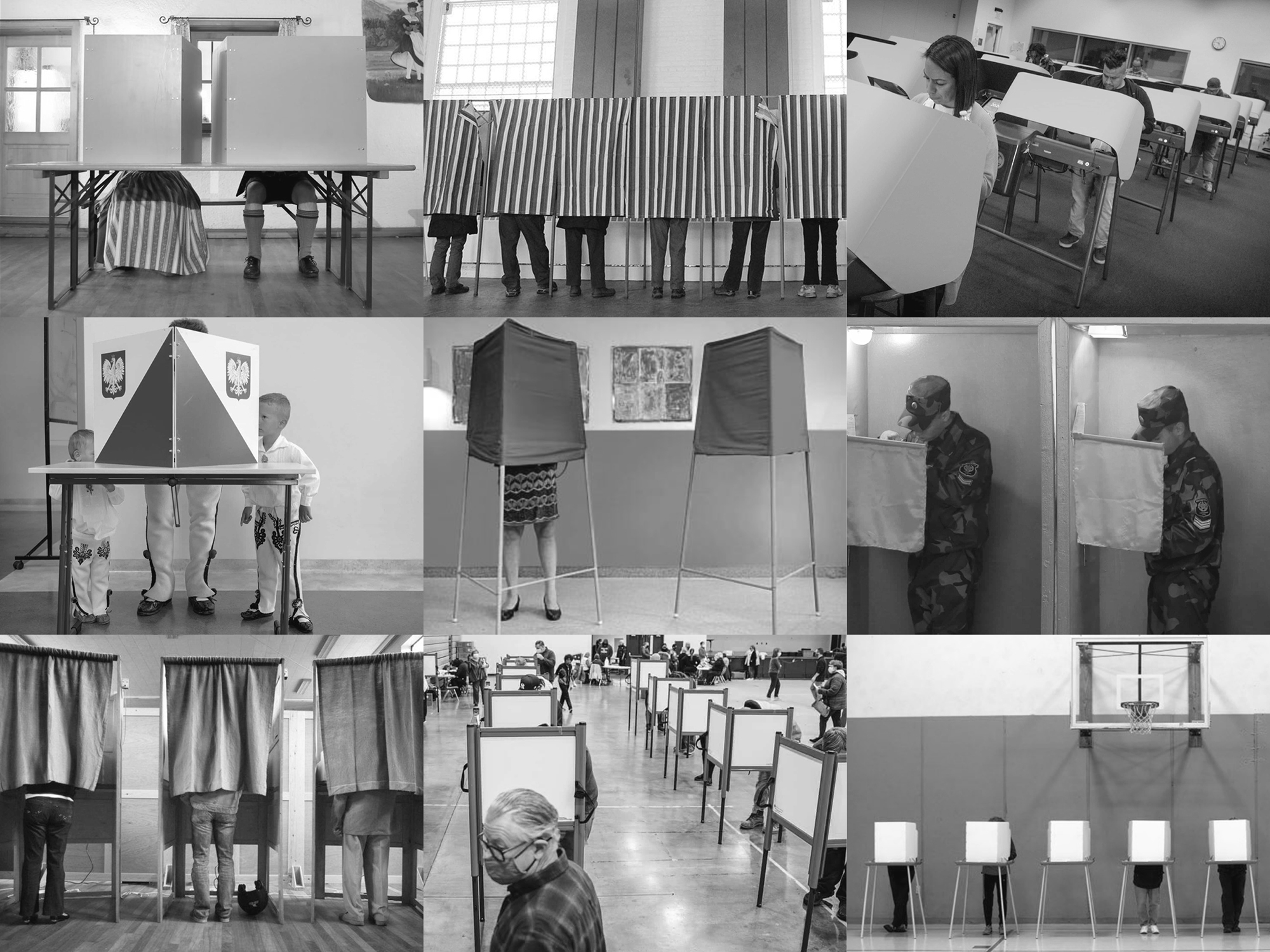Small Private Spaces
30.4.20Lockdown is now upon us. It isn’t possible to continue developing my cover prototypes right now, as the manufacturers have closed for the time being. But I am somewhat distracted anyway with the recording of this new reality1.
One of the key planks of our new normal is of course ‘social distancing’. This collides with an interest I’ve long had in proxemics2, the study of how we share spaces. The introduction now of clear dividing screens in some indoor spaces brings to mind other small private spaces that already exist. I had been collecting imagery of both voting booths and red telephone boxes without thinking about how much they had in common with each other.
One of the key planks of our new normal is of course ‘social distancing’. This collides with an interest I’ve long had in proxemics2, the study of how we share spaces. The introduction now of clear dividing screens in some indoor spaces brings to mind other small private spaces that already exist. I had been collecting imagery of both voting booths and red telephone boxes without thinking about how much they had in common with each other.

Voting booths3
There is something vaguely comical about voting booths, in that they are possibly the smallest of temporary private spaces and generally shielded by wood frames, plastic shapes or fabric curtains.
They must be just large enough to stand in (or at) and provide privacy, a flat surface and a pencil. An embodiment of the most basic material requirements of the democratic process.
They must be just large enough to stand in (or at) and provide privacy, a flat surface and a pencil. An embodiment of the most basic material requirements of the democratic process.

New uses for old red telephone boxes4.
There were once more than 70,000 of these iconic red telephone boxes: specially built private spaces to enable public phonecalls. They now number around 10,000, with half of those repurposed under the adopt-a-kiosk scheme into things like micro-libraries and gardens, art galleries and coffee kiosks. These are some I have come across.
1Artefacts: Lockdown_1
2Proxemics is the study of human use of space and the effects that population density has on behaviour, communication and social interaction. See Places & Spaces.
3Voting booth picture credits, clockwise from top left: Bavaria, Alexandra Beier/Getty; California/US, Mark Ralston/AFP/Getty; Norwich/UK, unknown; US, Jon Cherry/Getty; US, unknown; Sweden, Jonathan Nackstrand/AFP/Getty; UK, BBC/Getty; Poland, Bartosz Siedlik/AFP/Getty; Haringey/UK, Alamy; Belarus, Vasily Fedosenko/Reuters.
4Phone box pictures: P Hartley.
2Proxemics is the study of human use of space and the effects that population density has on behaviour, communication and social interaction. See Places & Spaces.
3Voting booth picture credits, clockwise from top left: Bavaria, Alexandra Beier/Getty; California/US, Mark Ralston/AFP/Getty; Norwich/UK, unknown; US, Jon Cherry/Getty; US, unknown; Sweden, Jonathan Nackstrand/AFP/Getty; UK, BBC/Getty; Poland, Bartosz Siedlik/AFP/Getty; Haringey/UK, Alamy; Belarus, Vasily Fedosenko/Reuters.
4Phone box pictures: P Hartley.